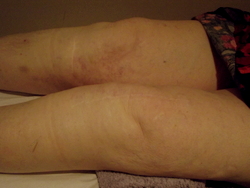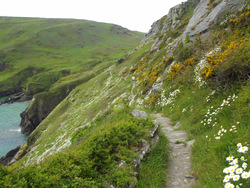 Research from the University of Manchester into the potential association between damp weather and arthritis pain, shows what many sufferers had long suspected. The pain is indeed aggravated by damp conditions.
Research from the University of Manchester into the potential association between damp weather and arthritis pain, shows what many sufferers had long suspected. The pain is indeed aggravated by damp conditions.
Daily data was supplied using a simple smartphone app from 2658 people around the UK, for six months. Participants had a range of painful conditions, but arthritis predominated. The smartphones’ GPS capability allowed researchers to correlate prevailing weather at participants’ locations with their reported pain. Humid days were likely to be more painful, whereas dry days were least likely. Low pressure and higher wind speed were also linked to more painful days, although to a lesser extent than humidity. Cold days that were damp and windy could also be more painful.
Professor Will Dixon of the University of Manchester, led the study. He said, “Weather has been thought to affect symptoms in patients with arthritis since Hippocrates. Around three quarters of people living with arthritis believe their pain is affected by the weather. The analysis showed that on damp and windy days with low pressure the chance of experiencing more pain, compared to an average day, was around 20%.”
Interestingly, traditional Chinese medicine has long recognised that wind, cold and damp can all aggravate joint pain and old injuries. One text, the Discussion on the Origin of All Illnesses from AD610, describes how wind, cold and damp cause swelling and pain. The new research above observed no association with temperature, when averaged across the population. My experience is patients will be more comfortable in dry cold conditions, as opposed to the damp cold of many a Devon winter.
(University of Manchester News website, accessed 24 October 2019.)
 A large retrospective cohort study undertaken in Korea, suggests that acupuncture is effective at reducing the likelihood of shoulder surgery. Using the Korean health service database, researchers compared the frequency of acromioplasty in patients who had previously received acupuncture, with those who had not. Shoulder disorders which featured included adhesive capsulitis, rotator cuff syndrome, shoulder impingement syndrome, and local sprain and strain. The acupuncture group contained over 111 000 patients, and the control group over 71 000 patients.
A large retrospective cohort study undertaken in Korea, suggests that acupuncture is effective at reducing the likelihood of shoulder surgery. Using the Korean health service database, researchers compared the frequency of acromioplasty in patients who had previously received acupuncture, with those who had not. Shoulder disorders which featured included adhesive capsulitis, rotator cuff syndrome, shoulder impingement syndrome, and local sprain and strain. The acupuncture group contained over 111 000 patients, and the control group over 71 000 patients.
 Acupuncture gets a conditional recommendation for the management of osteoarthritis, in the latest guidelines published by the American College of Rheumatology. The authors were satisfied that acupuncture can provide analgesia, but would like to see further high-quality studies conducted. They state “While the ‘true’ magnitude of effect is difficult to discern, the risk of harm is minor, resulting in the Voting Panel providing a conditional recommendation.”
Acupuncture gets a conditional recommendation for the management of osteoarthritis, in the latest guidelines published by the American College of Rheumatology. The authors were satisfied that acupuncture can provide analgesia, but would like to see further high-quality studies conducted. They state “While the ‘true’ magnitude of effect is difficult to discern, the risk of harm is minor, resulting in the Voting Panel providing a conditional recommendation.” On overview paper by Chinese authors of 12 recent (2006-2017) systematic reviews, concludes acupuncture treatment of knee osteoarthritis is effective. More specifically, according to evidence rated as high quality, acupuncture showed a better total effective rate, a better short-term effective rate and fewer adverse reactions, than conventional medicine.
On overview paper by Chinese authors of 12 recent (2006-2017) systematic reviews, concludes acupuncture treatment of knee osteoarthritis is effective. More specifically, according to evidence rated as high quality, acupuncture showed a better total effective rate, a better short-term effective rate and fewer adverse reactions, than conventional medicine.  Research from the University of Manchester into the potential association between damp weather and arthritis pain, shows what many sufferers had long suspected. The pain is indeed aggravated by damp conditions.
Research from the University of Manchester into the potential association between damp weather and arthritis pain, shows what many sufferers had long suspected. The pain is indeed aggravated by damp conditions. Just ten minutes a day of brisk walking can reduce the likelihood of impaired mobility in older adults by 85%. Similarly, the risk of difficulties with daily tasks such as bathing and dressing, can be reduced by 45%. All this emerges from a study by Northwestern University’s Feinberg School of Medicine in Chicago.
Just ten minutes a day of brisk walking can reduce the likelihood of impaired mobility in older adults by 85%. Similarly, the risk of difficulties with daily tasks such as bathing and dressing, can be reduced by 45%. All this emerges from a study by Northwestern University’s Feinberg School of Medicine in Chicago.